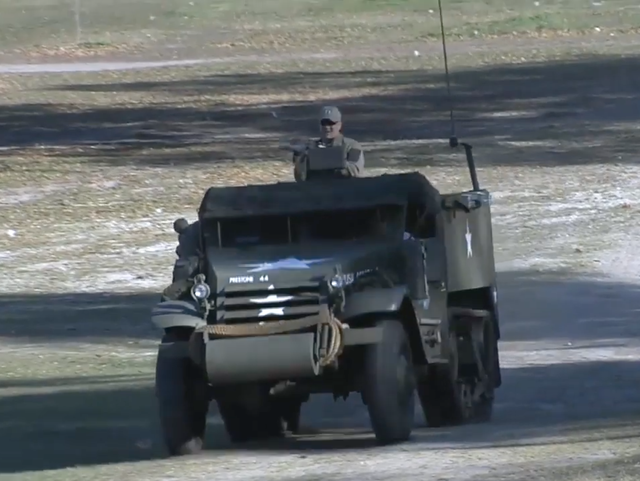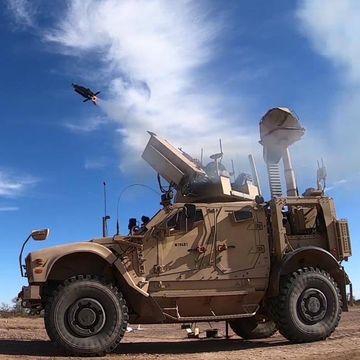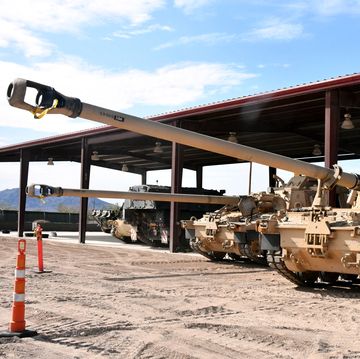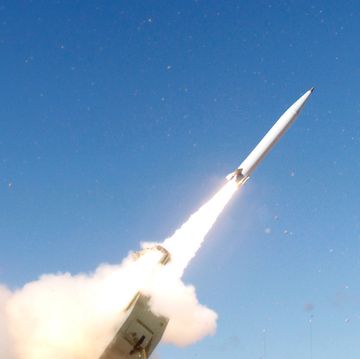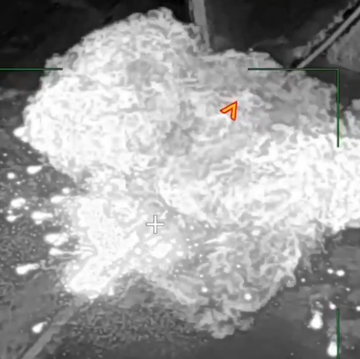- The half track was one of the first vehicles designed to carry infantry in combat.
- Collector Dave Thomas and his wife Judy restored a surplus M15 half track to pristine condition.
- The half track, although nearly 80 years old, looks virtually new.
One of the world’s first armored personnel carriers was the U.S. Army’s half track. Half wheeled, half tracked, the half track saw service around the world and was a key part of the Allied victory in World War II. Now one Florida couple is showing off their fully restored half track, complete with blank firing machine gun, and it’s a real beauty.
The U.S. Army was the most mechanized military army to serve in World War II. The army had many more trucks and armored fighting vehicles per soldier than any other, even the vaunted German Army. The Army build thousands of so-called half tracks to transport infantrymen serving in armored divisions. The nickname came from the half track’s unique running gear, which consisted of two front wheels and a tank-like tread system for cross-country travel.
Dave Thomas, a collector of military equipment, is the owner of a M15 Autocar half track. The M15 was an anti-aircraft vehicle armed with a 37-millimeter gun mounted where the infantry would normally ride. The vehicle, known as the M15 Combination Gun Motor Carriage, was meant to protect U.S. troop columns from enemy air attack. The near-total domination of the European Theater of Operations by the allied air forces, combined with the lack of enemy aircraft meant that the M15 was often used instead as an infantry support gun.
According to the Ocala Star Banner, Dave Thomas and his wife Judy Thomas restored the half track over a period of two years. Thomas’ half track was originally operated by the Belgian Army, likely given away by the U.S. after World War II. Thomas bought the vehicle and shipped it to Florida, where it underwent a painstaking refurbishment. Lacking the 37-millimeter gun, Thomas transported it into the armored personnel carrier (APC) version of the half track.
Everything about the vehicle looks brand new, from the replacement steel plating on the side to the tow rope on the front bumper. The olive drab paint job is further adorned with a bright white U.S. Army star, while the markings “PRESTONE 44” on the hood indicate it was winterized in 1944, and is only supposed to take Prestone antifreeze. The vehicle even has a M2 .50 caliber machine gun that fires blanks.
The half track served with the U.S. Army in World War II and the Korean War. The half track was designed as a battle taxi, transporting troops to the front line and giving them some protection until it was time to dismount and fight. The open-top nature of the half track was a double-edged sword: while infantry could jump out over the side of the thin steel walls, there was no overhead protection to protect troops from airburst artillery.
Later APCs, like the M113, were fully enclosed to protect troops from artillery and nuclear, chemical, and biological weapons.
Source: Ocala Star Banner

Kyle Mizokami is a writer on defense and security issues and has been at Popular Mechanics since 2015. If it involves explosions or projectiles, he's generally in favor of it. Kyle’s articles have appeared at The Daily Beast, U.S. Naval Institute News, The Diplomat, Foreign Policy, Combat Aircraft Monthly, VICE News, and others. He lives in San Francisco.
